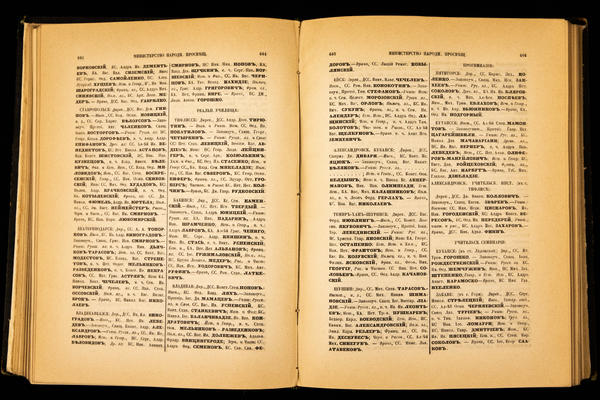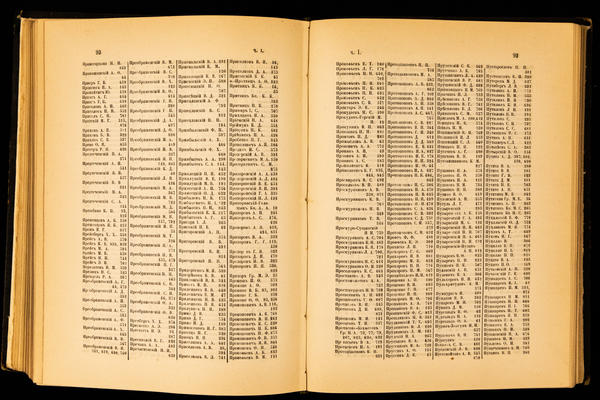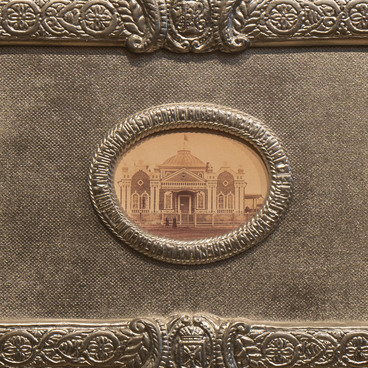The Official Directory reposited in the collection of the Museum of the Romanov Family was published in 1893 and belonged to Nicholas II — then Cesarevich (successor to the Crown) and future Russian Emperor – personally. These are the kind of publications that were classified as ‘memorandum books’ and served as general reference books on government services. They contained information on the daily life of all Russian provinces or a particular region, a list of government and public institutions with personnel valid for the relevant year.
The Official Directory of 1893 represented a ‘General spell-out of the heads and other officials of all the departments in the Russian Empire’. It consisted of two sections: ‘Central government authorities and locations and their agencies’ and ‘Authorities and locations of departments: of provinces, regions, districts, cities and counties, and agencies thereof.’
The hardcover of the Official Directory is covered in fine dyed leather. The base for it was cut out of solid cardboard. The edge is gold plated. The top cover shows the name and imprint date. It also has a gilded super ex libris — a sign that was put on books from the personal library of Nicholas II. In total, by 1914 the collection of the Emperor included about 15 thousand publications divided into 14 thematic sections. Librarians organized them into thematic, alphabetical, and other catalogues, which made it easy to navigate books, magazines, prints and watercolor collections.
Official Directories were published annually in the Russian Empire, from 1765 until the revolution of 1917. Until 1843, such publications were called ‘Menology and general list of employees of the Russian Empire’. In addition to the list of officials, they included a menology – a kind of calendar containing, in addition to dates, all Orthodox and secular holidays for the coming year. Since 1843, menologies started being published in separate editions.
The Official Directory of 1893 represented a ‘General spell-out of the heads and other officials of all the departments in the Russian Empire’. It consisted of two sections: ‘Central government authorities and locations and their agencies’ and ‘Authorities and locations of departments: of provinces, regions, districts, cities and counties, and agencies thereof.’
The hardcover of the Official Directory is covered in fine dyed leather. The base for it was cut out of solid cardboard. The edge is gold plated. The top cover shows the name and imprint date. It also has a gilded super ex libris — a sign that was put on books from the personal library of Nicholas II. In total, by 1914 the collection of the Emperor included about 15 thousand publications divided into 14 thematic sections. Librarians organized them into thematic, alphabetical, and other catalogues, which made it easy to navigate books, magazines, prints and watercolor collections.
Official Directories were published annually in the Russian Empire, from 1765 until the revolution of 1917. Until 1843, such publications were called ‘Menology and general list of employees of the Russian Empire’. In addition to the list of officials, they included a menology – a kind of calendar containing, in addition to dates, all Orthodox and secular holidays for the coming year. Since 1843, menologies started being published in separate editions.





